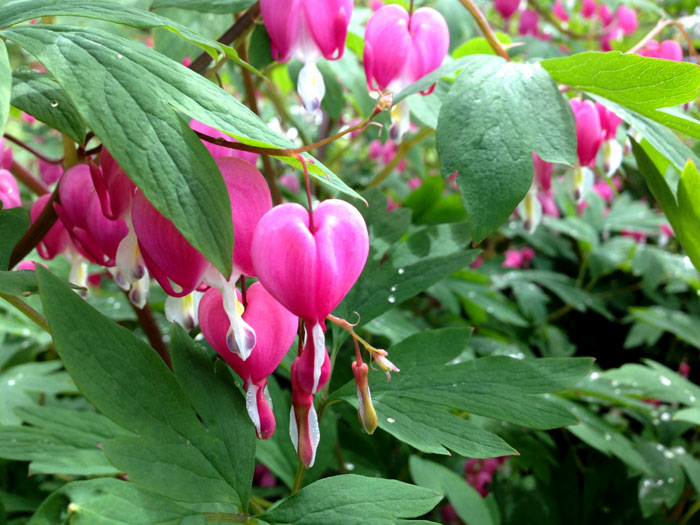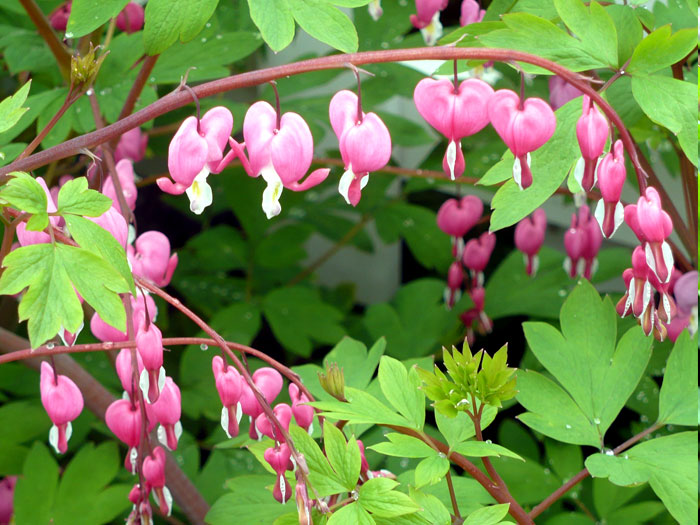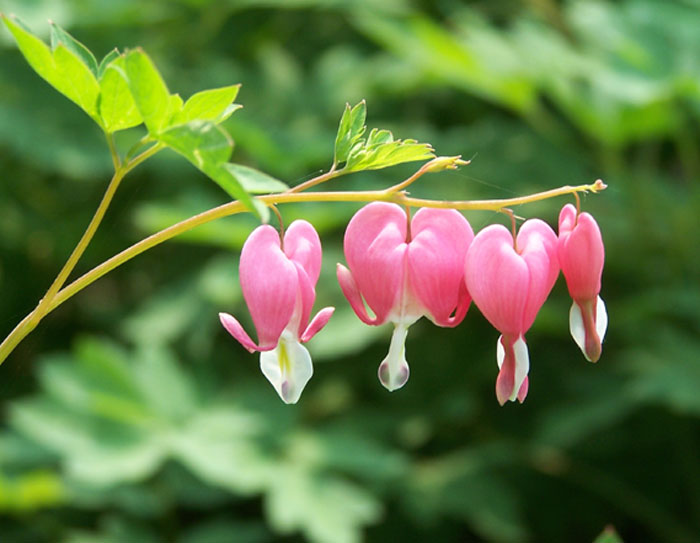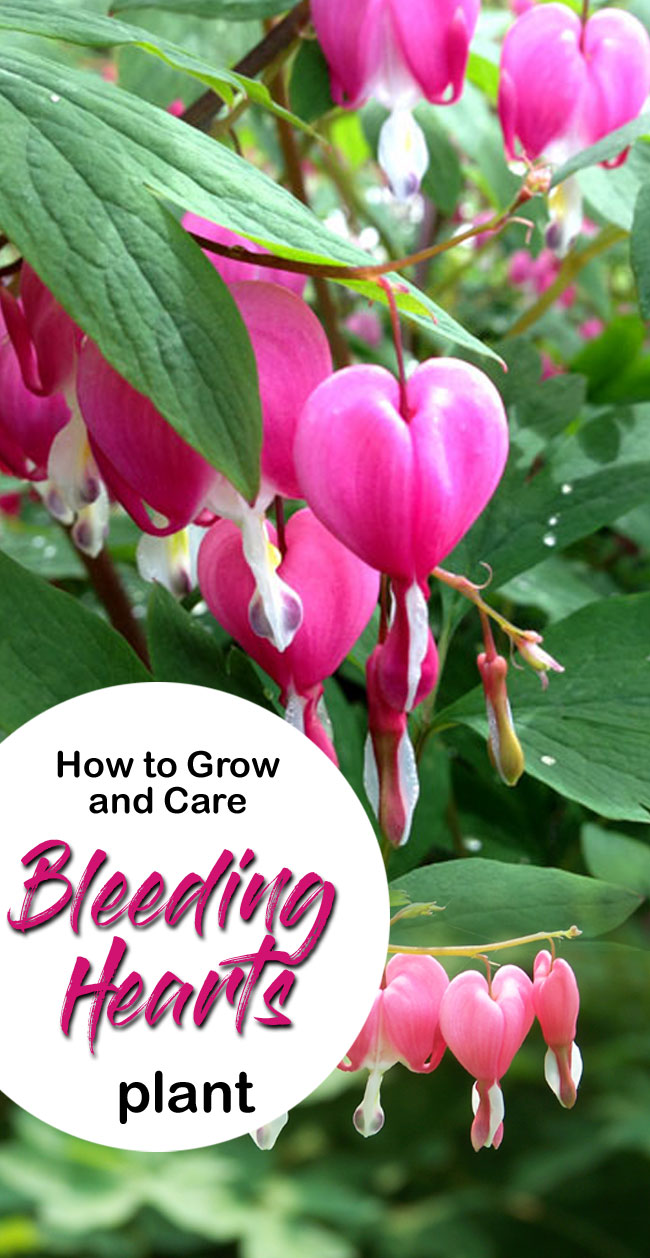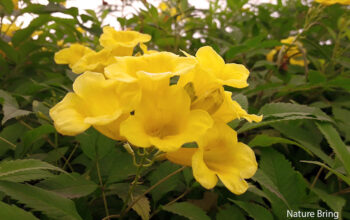Bleeding Hearts plant
Know-How to Grow and Care Bleeding Hearts plant, Growing Bleeding Heart in the pot to know more about this plant’s propagation, re-pot and problems then read the following article. Flowers of Bleeding Heart are stunning, heart-shaped shade flowers. Their blooming time is in summer, and flowering time is very short, but they are quite attractive. Lamprocapnos spectabilis flowers are about 1 inch in size, and they are displayed in rows on stems. Bleeding Heart is blooming from late spring to early summer and in other seasons it can be completely inactive.
Bleeding hearts become extinct during mid-summer and can miraculously return during the spring! Usually, flowers of the bleeding heart are white and pink, but some varieties of it are distracted by the original color. It meets the flowers of Dicentra Formosa, also known as Pacific bleeding-heart.
Overview of Bleeding hearts
Scientific name Lamprocapnos spectabilis
Common name Bleeding heart
Plant type Flower
Sun requires Part Sun to shade
Blooming time Spring
Flower colors White, Pink, and Red
Soil Well-drained, any soil
Soil pH Slightly acidic to natural
Zone 2-9
Growing Condition of Bleeding hearts flower
Soil and location
Bleeding Heart likes the well-drained and humus-rich soil with many organic manures. If you use the soil of the garden directly, spread two-inch-thick organic compost or well-rotted compost on top of the soil. Loosen the soil thoroughly before planting, it allows the extension of the roots well. Average Moisture Soil that does not stop water is better for it.
Lamprocapnos spectabilis plants perform very well in partial shade. Therefore, choose this type of location where they can obtain moderate shade lightly. Its pink flower performs in the presence of full sun with constant humidity, but for this, it requires a little shade with the humus-rich soil in the northern place. Its white flowers prefer shade more. Read more.
Propagation
Propagation of bleeding heart can start from seed, division, cutting or seedling. Start the seeds in a pot of soil inside the house and cover it with a plastic bag and keep it in the freezer for 6 to 8 weeks. Remove the pot to grow in the regular seedling position.
Watering
Give water well after bleeding heart planting, water well on all four sides of the plant, so that the soil around the roots are saturated. Water this plant well in the summer, though it may still disappear until the fall or spring. Western bleeding heart is more tolerant than other species, but keep moisture and do not soggy the soil.
Fertilizer
Bleeding hearts plant does not require heavy feed. But if your soil is heavy then you need amendment. If there is a rich, organic soil then you do not need amendment. These plants are woodlands and do good with the top dressing of the leaf mold.
Add new time-release fertilizer fertilizers to the surrounding soil when new growth occurs in the spring. Other composts can also be added to it.
Spacing
Fringed bleeding hearts plant, Fern-leaf Bleeding Hearts and Dutchman’s Breeches Spacing 12-15 inches apart, The Old Fashion Bleeding Hearts is a suitable about 18 inches apart and white-colored plant between 24 -30 inches apart is appropriate.
Growing Bleeding Heart in pots
You can easily develop lamprocapnos spectabilis in containers, barrels, and buckets.
- To develop a bleeding hearts plant, make sure to select large size containers because it can grow enough and it will get the necessary space to thrive. Use the Dicentra Formosa species to grow in containers that are the compact size. Dicentra Formosa grows up to only 10 inches-1.5 feet and can grow in large containers for four to five years.
- Fill the containers potting mix, which contain much organic manure. To improve the drainage, add peat moss or perlite or thick sand to ensure that it allows sufficient drainage. Soil should be moist but do not soggy. Before filling the potting soil, ensure that there are sufficient drainage holes in your pots.
- The plant root should be set bare-root, which means that the soil should be washed with water from the root so that there will be no threat of soil diseases in your garden or elsewhere. It is easier to handle inactive bare-root plants.
- After planting, the plant should be well-drained, soak the soil slowly around the roots. In the autumn its strong roots are formed and the plants will grow in the spring. Its flowers will get in spring.
- Place your plants in a place where they can obtain medium shade lightly. Pink-colored plants can manage the presence of sun in the consistently moist place (not wet) in the north places where sunlight is less strong but requires little shade. White-colored plants prefer shadow everywhere.
- During the growing season, you can fertilize your plants with diluted liquid fertilizer once a month. If not, you can also use a slow-release of granulated fertilizer or compost.
- In mid-summer its leaves become yellow and the plant goes into the inactive habitat. At this time you can cut and remove these leaves. After resting a few months, bleeding hearts start growing cycles.
Bleeding hearts care
- Lamprocapnos spectabilis plants love the partial or deep shade and moist soil.
- Place its plants in their garden about two feet from each other in the early spring.
- These plants can tolerate direct sunlight during the winter, but they should provide shade in the summer season.
- The plant requires regular fertilization, especially during the development period.
- It is a very good perennial, so if the plant falls on the ground during the summer, then you do not worry. Remove the dead foliage from above the plant, and allow the rest when the bloom time does not come. Read more.
Pests and diseases lamprocapnos spectabilis
- Bleeding hearts are usually free from troubles. Deer and rabbits also ignore it, but sometimes the slugs and snails damage the young leaves.
- In this plant, sometimes small insects aphids attack and suck the plant juice. They can get rid of pesticide soap with spray or wash. Due to mildew, a white powder is seen on the leaves and the plant looks unsightly, sprinkles with fungicide.
- Other fungal diseases such as Verticillium wilt, Fusarium Wilt and Stem rot, etc. also worsen the plant.
Due to the problem of Verticillium wilt, the leaves wilt, dig the diseased plant and destroy it immediately.
Read also: How to grow Ranunculus flowers. How to grow Primrose flowers in containers. Growing and care about Pansy flowers. Anthurium plant Growing indoors. Coriander Growing and care in containers. Jade Plant growing indoors. Best flowers for Bees and Butterfly garden. Lily Growing guide. Celery growing and caring guide. Clove plants growing and caring tips. Plumeria growing and caring guide. Cantaloupe growing in containers. Growing Impatiens in your garden. Crossandra Growing and care guide.
Happy gardening
For pin:

